Time is something that we can measure, but have you stopped to think about how we measure it? We measure it by how things move: the earth is spinning, it is also moving around the Sun. If you have a mechanical clock you can see the gears moving or hear the ticking sound of the gears as they move. Even digital clocks are based on movement: the cycles of particles moving through a circuit. Time is really just a measure of movement from someone’s point of view: imagine if you were a Martian your day would be different because a full rotation takes slightly longer – 37 minutes longer – than an earth rotation. Instead of asking you how old you are, I could ask you how much you have moved since you were born – apparently we move about 19,200 miles every day. We do that with cars, it’s almost more important how much they have moved than when they were made.
Have you noticed that even if a school day at All Souls lasts seven and a half hours sometimes it seems longer and sometimes it seems shorter? Why does an hour sometimes feel long and sometimes feel like it went by too fast? Why does time seem to go faster when we are having fun or very focused and interested? Why does time seem to slow down when we are bored or waiting in line for food or spending time with people we don’t like very much? Time depends on your point of view. In today’s first reading we hear the words, “Encourage each other daily while it’s still today.” God doesn’t measure time the way we do, “for Him, one thousand years happen in a day.” We can be more like God and have wisdom like His if we think about today and tomorrow differently. Today, if I put myself in God’s shoes, is this moment that is constantly new, “today” is right now. Tomorrow is eternity, tomorrow is heaven, tomorrow is when this life is over. When people ask you what you are doing tomorrow, you can ask them: “You mean 19,200 miles from here or from God’s point of view?” From God’s point of view, tomorrow I will be with Him in paradise.
CYRIL OF JERUSALEM:
“Give us this day our superessential bread.” Ordinary bread is not “superessential,” but this holy bread is superessential in the sense of being ordained for the essence of the soul. Not of this bread is it said that it “passes into the stomach and is discharged into the drain.” No, it is absorbed into your whole system to the benefit of both soul and body. By “this day” he means “daily,” as in Paul’s “while it is called ‘today.’ ”1
THEODORE OF MOPSUESTIA:
He says that those who have believed and shared in the Spirit have become partakers in Christ’s “hypostasis” in that they have received a certain natural communion with him. Now there remains the task of preserving this foundation with a pure resolve.2
40. a leper approached Jesus:
This pericope, along with its synoptic parallels (Matt 8:1–4; Luke 5:12–16) and Luke 17:11–19 (the ten lepers), are the only NT narratives about the healing of leprosy. The term “leprosy” in the Bible, from the Greek leptein (“peel off”), is most likely not modern leprosy (Hansen’s disease) but refers to a wide variety of skin disorders. The Priestly legislation of Leviticus 13–14 treats this condition extensively. There the Hebrew term ṣāraʿat also describes a fungus that affects fabrics and houses (Lev 13:47–58; 14:13–45). In the OT “leprosy” is frequently regarded as a punishment for sin (Num 12:10–15; cf. Deut 28:27, 35; 2 Kgs 5:25–27; 2 Chr 26:16–21). According to Lev 13:45–46 the person with a leprous disease shall wear torn clothes and have disheveled hair, and shall live alone with a dwelling “outside the camp, and cry out ‘unclean, unclean.’ ” Physical contact with such people rendered a person “unclean” too. Leprosy in the strict sense seems to have spread to the Near East from India ca. 300 B.C.E., and so it could have existed in Palestine at the time of Jesus. Leprosy was thought to be like death (most likely because of the pallor of the person and the isolation from community), and a cure of leprosy was considered as marvelous as raising the dead (Num 12:10–12; 2 Kgs 5:7).3
Footnotes
- MYSTAGOGICAL LECTURES 5.15. Heen, E. M., & Krey, P. D. W. (Eds.). (2005). Hebrews (p. 56). Downers Grove, IL: InterVarsity Press.
- COMMENTARY ON HEBREWS 3.12–13. Heen, E. M., & Krey, P. D. W. (Eds.). (2005). Hebrews (p. 57). Downers Grove, IL: InterVarsity Press.
- Donahue, J. R., & Harrington, D. J. (2002). The Gospel of Mark. (D. J. Harrington, Ed.) (Vol. 2, p. 88). Collegeville, MN: The Liturgical Press.

